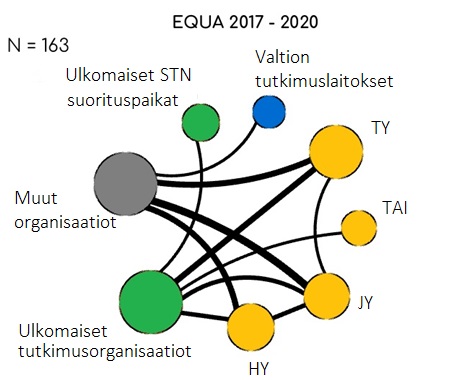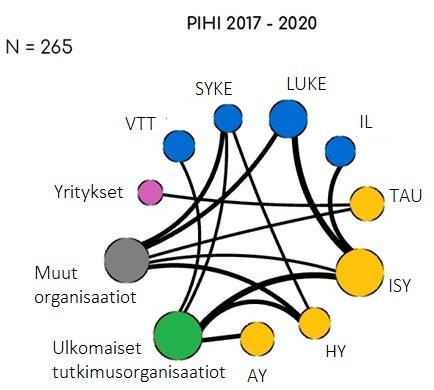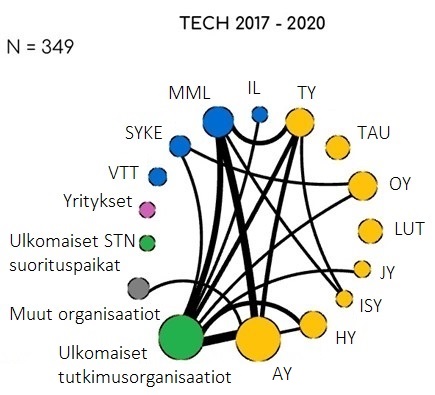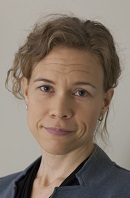
Strategic research is interdisciplinary and has high scientific impact
The Strategic Research Council (SRC) at the Research Council of Finland funds research that is of a high scientific standard and that has societal relevance and impact. A recent bibliometric analysis shows that strategic research has an extremely high impact scientifically: The scientific publications of SRC-funded projects have been exceptionally well received in the international scientific community.
In autumn 2023, the Research Council of Finland carried out the first bibliometric analysis of strategic research. This entailed a quantitative analysis of publishing using mathematical and statistical methods. The analysis was carried out in cooperation with CSC – IT Center for Science Ltd. The analysis determined the scientific renown the publications gained, co-publishing between organisations, and the fields of science and interdisciplinarity of publications. The publication dataset included the scientific publications reported by projects within the first three SRC programmes. The programmes were:
- Equality in Society (EQUA)
- A Climate-Neutral and Resource-Scarce Finland (PIHI)
- Disruptive Technologies and Changing Institutions (TECH).
A total of 17 projects were funded within the programmes, with around 100 million euros granted between 2015 and 2021. The expert evaluations of these programmes were completed in summer 2023.
The bibliometric analysis included the scientific publications published in 2017–2020 that were reported by the projects and included in the Web of Science database. There were 777 publications in total, and the database covered around 74% of all reported scientific publications. The coverage was excellent for publications in the PIHI and TECH programmes (92% and 86%) and adequate for those in the EQUA programme (46%).
Publications exceptionally well received in the international scientific community
The results of the analysis show that strategic research has gained significantly more renown in the international scientific community than research on average both in Finland and around the world. The features unique to strategic research, such as research done within interdisciplinary consortiums and committed interaction with knowledge users, seem to increase the relevance of and interest in the research also in the scientific community.
Scientific renown was measured with the top 10 index, which examines the proportion of scientific publications in the most cited 10 per cent in a certain field and time frame. The attention strategic research gained was higher (1.65) than the world average (1.00) or Finland’s average (1.10) when measured with the top 10 index. In the PIHI and TECH programmes, the publications’ citation index (1.57 and 1.89) is higher than the index of Academy Projects and Academy Research Fellows (1.23) within the analysis period. Among the TECH programme publications, there were nearly twice the number of publications that were in the most cited 10 per cent in their field compared to the world average.
Even when examined by discipline, strategic research has received more scientific renown than the world average and, in most cases, more than research published by Academy Projects and Academy Research Fellows. Research publications by SRC projects have received particular attention in disciplines including physics, geosciences and space science; ecology, environmental science and plant biology; economics; and social sciences, other fields. An interesting aspect of the TECH programme on disruptive technologies is that the social science research funded within the programme received more attention in its field than the technical research – which did also very well in its field.
Cooperation between organisations pays off
One of the objectives of the strategic research funding instrument is to strengthen and develop cooperation between research institutes and universities, which can be seen in research publications. Approximately one-third of the publications by the SRC projects were co-published by Finnish organisations, one-third in cooperation with international organisations, and one final third within a single organisation. In all above-mentioned categories, strategic research publications received more attention from the scientific community than publications by Academy Projects or Academy Research Fellows. International co-publications are clearly the most cited ones, as has been seen in multiple previous analyses.
Co-publishing can be illustrated as programme-specific networks (figures 1–3). The network diagram shows which organisations were the biggest publishers of each STN programme and which organisations or groups of organisations co-published.
SRC projects produce interdisciplinary publications
Strategic research projects approach current societal challenges from a problem-oriented perspective that utilises research within many disciplines. The publication analysis shows that interdisciplinarity meant utilising different disciplines not only in the same project, but also in individual research publications. The analysis examined the interdisciplinarity of research publications based on the sources used and the citations received by the publications. The level of interdisciplinarity was determined by looking at the disciplinary diversity of both the literature that was used as a source and the literature that cited the research.[1]
Whichever way it was measured, strategic research was more interdisciplinary than the world average. The disciplinary diversity of the sources used in research publications was higher than the world average for each of the 17 projects. The highest diversity was found in the project ArtsEqual – Arts as Public Service in the EQUA programme. Other projects high in the disciplinary diversity scale were in the TECH programme, whose interdisciplinary nature was also commended in its expert evaluation (PDF). Based on the citations received, strategic research has also mainly been more interdisciplinary than the world average. This indicates that strategic research is relevant and useful not only for a single scientific field, but also for the wider scientific community.
Scientific renown a solid basis for societal impact
Strategic research is expected to provide both scientific excellence and societal applicability. Programme evaluations and the overall evaluation of the funding instrument (TIETOVA only in Finnish) show that long-term research programmes have met both expectations. In strategic research, the appreciation of the scientific community and the benefits to the society complement each other. When solutions are based on research valued by the international scientific community, they can be best utilised to reform society in a sustainable way.
[1] Diversity consists of three components: the number of disciplines, the evenness of the distribution of disciplines, and the diversity among disciplines. Although there are some problems in the metrics, such as the discipline classification and how to determine a classification for individual publications, it is nevertheless the most widely used method of measuring interdisciplinarity in bibliometrics. This analysis used a diversification index normalized according to the field of science and the time of publication of the publication.
Figures 1, 2 and 3: The main organisations and their cooperation in scientific publication within the first three SRC programmes.
The circles in each diagram show the organisations or groups of organisations that published at least 16 publications with funding from the SRC programme or that accounted for at least 5% of the programme's total number of publications. The remaining organisations form a group named “Other organisations”. Universities are marked in yellow, state research institutes in blue, foreign organisations in green and business enterprises in red. The size of the circle represents the relative share of the organisation or group of organisations in the programme's publications. Co-publishing is indicated with a curve, where the thickness of the curve correlates with the number of co-publications by the organisation. The size of the circles and the thickness of the curves are proportional to the number of publications of each programme, which is why the numbers they are based on vary between figures. N is the number of publications included in the analysis from each programme.
Figure 1:

Figure 2:

Figure 3:

AY: Aalto University
HY: University of Helsinki
ISY: University of Eastern Finland
JY: University of Jyväskylä
LUT: LUT University
OY: University of Oulu
TAI: University of the Arts Helsinki
TAU: Tampere University
TY: University of Turku
IL: Finnish Meteorological Institute
LUKE: Natural Resources Institute Finland
MML: National Land Survey of Finland
SYKE: Finnish Environment Institute
VTT: VTT Technical Research Centre of Finland
Results presented here are derived from the Web of Science ® prepared by CLARIVATE ANALYTICS ®, Inc. (Formerly the IP & Science business of Thomson Reuters®), Philadelphia, Pennsylvania, USA: © Copyright CLARIVATE ANALYTICS ® 2023. All rights reserved. Results are taken with permission from the bibliometric analysis system provided by CSC - IT Center for Science Ltd., Espoo, Finland.
